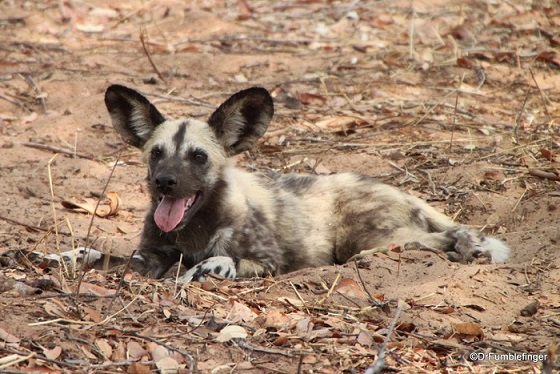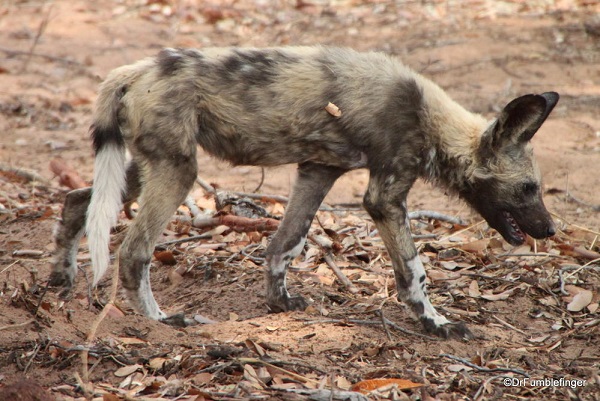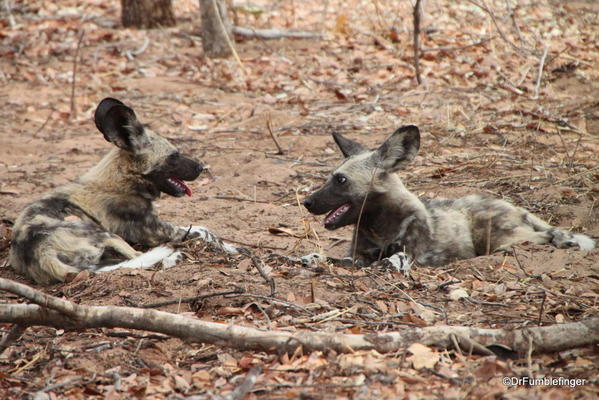
African Wild Dogs
by Dr. Fumblefinger
One of the rarest animals I’ve ever encountered in nature is the African Wild Dog. While on safari in Chobe National Park, our guide took us to see a pack of them living near the park boundary. We spent half an hour quietly studying them. They were sleeping in the warm afternoon, pups tugging at each other, and the parents not wanting to be bothered by them. The normality of the scene belied how uncommon seeing these dogs is. No one knows precisely how many of them survive. However, the latest estimates put their population at 6,600.

Also known as the Cape hunting dog or painted dog, African wild dogs are predators of sub-Saharan Africa’s thin woodlands and grasslands. Thin, lean, and long-legged, they have a multicoloured coat that provides excellent camouflage. They have large, rounded ears and four-toed feet (other dogs have five toes, but who’s counting?) Adults are about a meter tall and can weigh 40-80 pounds (18-36 kg).

African wild dogs live and hunt in packs, usually comprising a breeding pair and their pups. Sometimes larger groups band together. These dogs are very social, helping weak or ill members and sharing food. They vocalize and communicate like most canines. Most of all, they are excellent hunters and can tackle smaller antelopes and even larger prey like impala or wildebeest, especially if old, very young or injured. Unfortunately, the African Wild Dog is threatened by expanding human settlements. They are killed as potential pests (who might kill livestock) and from diseases they can catch from domesticated animals.